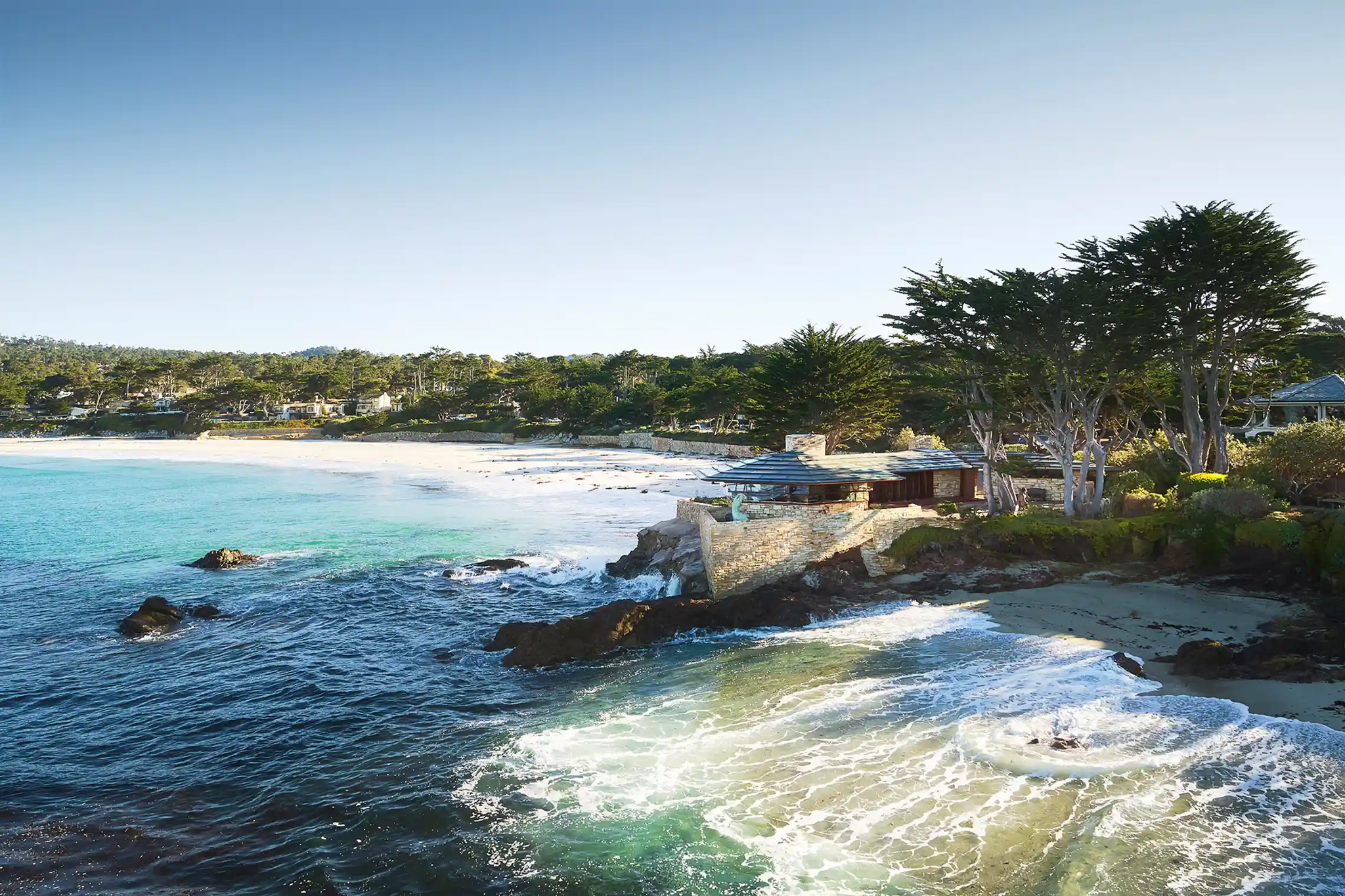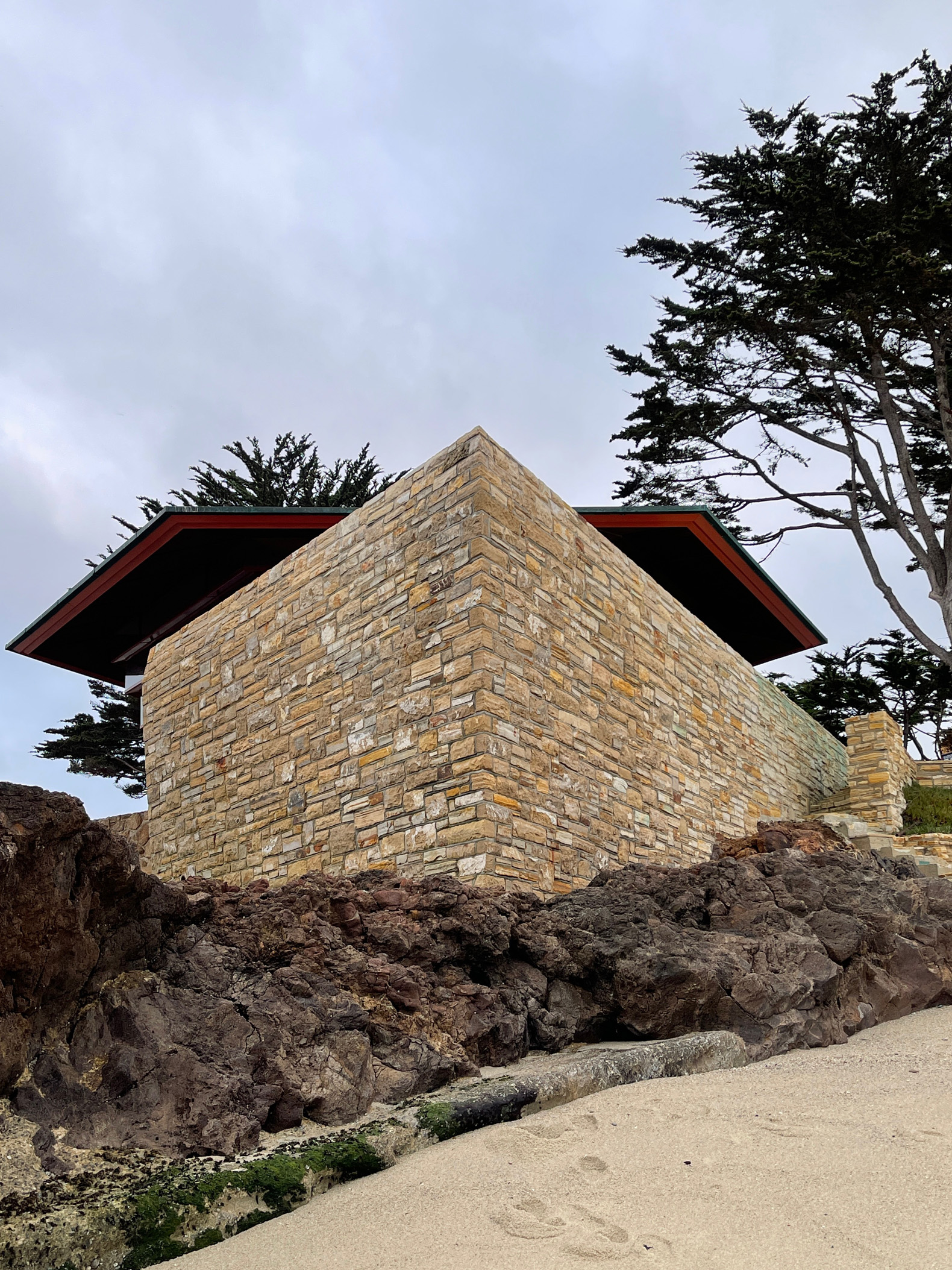with the long white surf lines of the sea"
That is the kind of house I promised my client.
This "cabin on the rocks is not a family house but o haven
at the seaside for a single individual living in specific comfort of her own choosing. It is appropriately simple: a little kitchen, guest bedrooms, baths, and a chamber
for the mistress of the house.
It is small yet wide open, built around a tall, strong fireplace, overlooking the great Pacific on three sides. Breaking waves often dash up over the windows, which are so constructed that they may be left open in wind and spray.
The roof in verdigris-colour enamelled metal, is there to stay, adding a blue-green note to the seascape it falls within. The over-all effect is quiet, and the long white surf lines of the sea seem to join the lines of the house to make a natural melody.
Here is the same old challenge to the architect: expressing the special conditions, the special circumstances. Does not whatever art there is in architecture come from this?»

Home for Della Walker on Carmel Point by Frank Lloyd Wright. Photograph by Matthew Millman. Courtesy of Sotheby's International Realty.
The sellers were a group of descendants of the home’s original owner Della Walker, an artist and the widow of Minneapolis lumber executive Clinton Walker. The couple relocated to California in 1904, living there for four decades before Mr Walker’s death in 1944, according to the historic places report.

Bow view of Mrs Clinton Walker House in Carmel-by-the-Sea was taken on December 04, 2021. The house was designed by Frank Lloyd Wright in 1948 and completed in 1951.
“I am a woman living alone—I wish protection from the wind and privacy from the road and a house as enduring as the rocks but as transparent and charming as the waves and delicate as the seashore,” she wrote. “You are the only man who can do this—will you help me?”
Frank Lloyd Wright quickly agreed to work on the project, expressing his pleasure that her letter was “brief and to the point.” In later correspondence between the pair, Ms Walker wrote to the architect that her daughter had sent her a picture of Fallingwater, in Pennsylvania. “If Mr Wright did this for a stream, what will he do for an ocean,” she said her daughter wrote.
In 1956, a studio addition was designed by Mr Wright for Ms Walker’s craftwork and weaving at the southeast corner of the building. The plans were eventually used to make way for an expanded primary bedroom in 1960, the report says.
The home has long captured attention in Carmel. The 1959 film "A Summer Place" featured scenes filmed at the residence.


















![10 Architecture Studios Led by women [XII] 10 Architecture Studios Led by women [XII]](/sites/default/files/styles/mopis_home_news_category_slider_desktop/public/2025-03/metalocus_10-arquitectas-xi_01b.jpg?h=3b4e7bc7&itok=KFjWtS5J)














